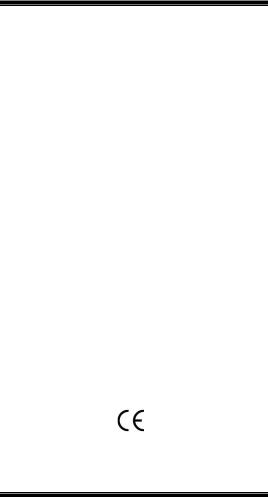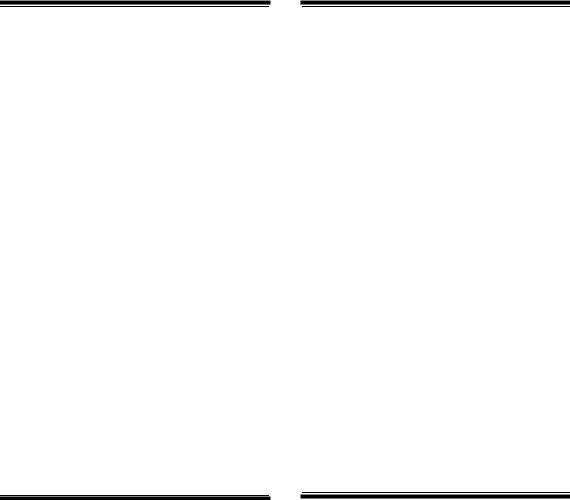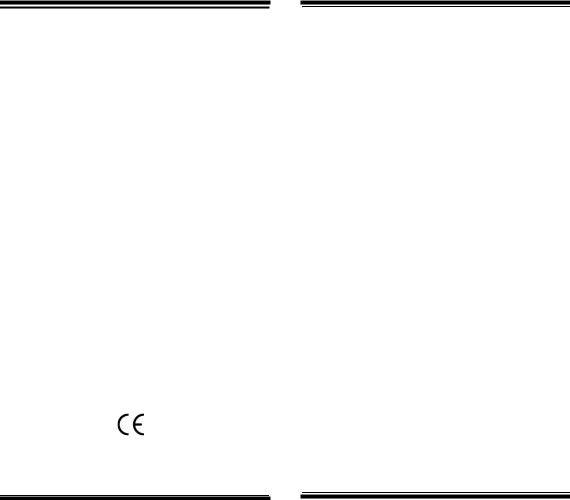REFCO STARTEK User Manual [en, de, es, fr, it]

Operation Manual
Bedienungsanleitung
Manuel d’utilisation
Manuale d’istruzione
Manual de Instrucciones
STARTEK
|
REFCO Manufacturing Ltd. |
||
|
Industriestrasse 11 |
||
|
CH-6285 Hitzkirch (Switzerland) |
||
|
Telefon |
+41 41 919 72 82 |
|
|
Telefax |
+41 41 919 72 83 |
|
10084 Rev. C |
|||
www.refco.ch |
info@refco.ch |
||
|
|
|
|

English
Congratulations on the purchase of the REFCO STARTEK Refrigeration Leak Detector, the most technologically advanced of its kind. The STARTEK’s low power requirements, small size and high sensitivity combine to create a tool which is easy to handle and ultra effective at locating even the most difficult-to-find leaks.
Fully SAE J1627 compliant, STARTEK will detect leaks as small as 0.1 oz/yr (3g/year) in R12, R22, R134a and other halogen refrigerant systems.
STARTEK should not be used on systems that contain flammable refrigerants such as Propane, Isobutane, etc.
TECHNICAL DATA
Ÿ |
Dimensions |
150 x 34 x 55 mm |
Ÿ |
Weight |
190 g |
Ÿ |
Batteries |
2 x AA batteries |
Ÿ |
Battery Life |
40 hours |
Ÿ |
Sensitivity |
< 3g/year (0.1 oz/yr) |
Ÿ |
Sensor lifetime |
approx. 30 hours |
Ÿ |
Operating temperature |
0 – 50°C |
Ÿ |
Warm up time |
< 2 sec. |
Ÿ |
Response time |
instantaneous |
Ÿ |
Reset time |
instantaneous |
Ÿ |
Probe length |
30 cm |
Ÿ |
Warranty |
2 years |
ES-02 (pack of 2) |
Part-No. 4507577 |
|
Replacement sensor |
|
|
1

English
INSTRUCTIONS
1.Press the button to turn the unit on.
2.The LED will flash orange for a short moment to indicate auto-reset, afterwards the unit will begin beeping and flashing green.
3.To reset the unit to the existing level of ambient refrigerant, press and release the button. The LED will flash orange briefly to indicate the reset. All levels of refrigerant less than the reset level will be ignored.
4.Unit turns on in the low sensitivity level, which is adequate for most leaks. Press the button twice (double-click like a computer mouse). The LED will fade from red to green and a sweeping sound effect of low to high pitch will be heard. The sensitivity is now set for 3g/year (0.1oz/yr). This mode should only be used for looking for leaks of less than 14g/year (0.5 oz/yr).
5.Double click again to change back to low sensitivity.
6.Move the probe towards a suspected refrigerant leak at a rate of less than 2 inches (50 mm) per second, no more than ¼ inch (5 mm) away from the suspected source.
7.If a leak exists, the sound will increase in rate and pitch and the LED will start flashing rapidly.
8.To turn the STARTEK off, press and hold the button for 3 seconds.
FEATURES
ŸIf the sensor is damaged, a sweeping alarm and a red-green flash will indicate the problem.
ŸA flashing LED during normal operation also reflects the battery level:
Green: batteries are fresh
Orange: batteries should be changed
If the batteries are nearly empty, the LED will turn solid red and a two-tone alarm will be noted for 5 seconds, before STARTEK will power itself off.
ŸIf the unit is left on unattended, it will automatically turn off after about 5 minutes to conserve batteries.
English
SAE J1628 RECOMMENDED PROCEDURES
For the purpose of Automotive A/C Testing with respect to the SAE J1627 standard, the following leak testing procedure applies:
1.Operate the Startek in high sensitivity mode.
2.Leak test with the engine not in operation.
3.The air conditioning system shall be charged with sufficient refrigerant to have a gauge pressure of at least 340 kPa when not in operation. At temperatures below 15°C, leaks may not be measurable, since this pressure may not be reached.
4.Take care not to contaminate the detector probe tip. If the part is particularly dirty, it should be wiped off with a dry shop towel or blown off with shop air. No cleaners or solvents shall be used, since many electronic detectors are sensitive to their ingredients.
5.Visually trace the entire refrigerant system, and look for signs of air-conditioning lubricant leakage, damage, and corrosion on all lines, hoses, and components. Each questionable area shall be carefully checked with the detector probe, as well as all fittings, hose to line couplings, refrigerant controls, service ports with caps in place, brazed or welded areas, and areas around attachment points and hold-downs on lines and components.
6.Always follow the refrigerant system around in a continuous path so that no areas of potential leaks are missed. If a leak is found, always continue to test the remainder of the system.
7.At each area checked, the probe shall be moved around the location, at a rate no more than 25-50 mm/s and no more than 5 mm from the surface completely around the position. Slower and closer movement of the probe often helps locate the exact position of the leak.
8.An apparent leak shall be verified at least once by blowing shop air into the area of the suspected leak, if necessary, and repeating the check of the area. In cases of very large leaks, blowing out the area with shop air often helps locate the exact position of the leak.
9.Leak testing of the evaporator core while in the air conditioning module shall be accomplished by turning the air conditioning blower on high for a period of 15 sec. minimum, shutting it off, then waiting for the refrigerant to accumulate in the case for time specified by
2 |
3 |

English
paragraph 10, then inserting the leak detector probe into the blower resistor block or condensate drain hold if no water is present, or into the closest opening in the heating/ventilation/air conditioning case to the evaporator, such as the heater duct or a vent duct. If the detector alarms, a leak apparently has been found.
10.The accumulation time shall be 10 minutes.
11.Following any service to the refrigerant system of the vehicle, and any other service which disturbs the refrigerant system, a leak test of the repair and of the service ports of the refrigerant system shall be done.
BATTERY INSTALLATION AND
REPLACEMENT
ŸTurn the power off.
ŸRemove the battery cover from the back of the instrument by pressing down while simultaneously sliding the cover back. Be careful not to lose the extra sensor stored in the battery compartment.
ŸInsert 2 size ‘AA’ alkaline batteries.
ŸSlide battery cover back into place.
English
SENSOR
A STARTEK sensor will last between 25 and 30 hours of continuous use. A failed or failing sensor will be indicated in one of the following ways:
1.Unstable or erratic operation of the unit and many false alarms, even in pure air.
2.A continuous “siren” sound.
SENSOR REPLACEMENT
In either case, replacement of the sensor is necessary:
ŸTurn the power off.
ŸLocate the replacement sensor in the battery compartment.
ŸUnscrew (turn counter clockwise) the old sensor from the end of the probe.
ŸScrew (turn clockwise) the new sensor into place.
MAINTENANCE
The STARTEK should provide years of service with little maintenance aside from changing batteries and sensors. The case may be cleaned with a shop towel moistened with water and a mild detergent. Do not use solvent of any kind.
FOR USA CONTACT
REFCO Manufacturing (US) Inc.
109 Independence Dr.
Lockport NY 14094
Phone: |
(716) 438-2796 |
Fax: |
(716) 438-2746 |
sales@refcoswiss.com
www.refcoswiss.com
4 |
5 |

Deutsch
Wir gratulieren Ihnen zum Kauf des neuen REFCO STARTEK Lecksuchgerätes, der neuesten Technologie.
Das handliche Format, die Bedienerfreundlichkeit und die hohe Sensibilität ermöglicht Ihnen eine optimale Lecksuche. Das Gerät entspricht der SAE J1627 Norm, für Lecks von bis zu 0.1 oz/yr (3g/Jahr), für die Kältemittel R12, R22, R134a sowie sämtliche andere halogene Kältesysteme.
Der STARTEK ist nicht geeignet für entflammbare Mittel wie z.B. Propan, Isobutan etc.
TECHNISCHE DATEN
Ÿ |
Abmessung |
150 x 34 x 55 mm |
Ÿ |
Gewicht |
190 g |
Ÿ |
Batterien |
2 x AA Batterien |
Ÿ |
Einsatzdauer |
40 Std. |
Ÿ |
Empfindlichkeit |
< 3g/Jahr (0,1 oz/yr) |
Ÿ |
Einsatzdauer Sensor |
ca. 30 Std. |
Ÿ |
Einsatztemperatur |
0 – 50°C |
Ÿ |
Aufwärmzeit |
< 2 Sek. |
Ÿ |
Reaktionszeit |
sofort |
Ÿ |
Resetzeit |
sofort |
Ÿ |
Sensorverlängerung |
30 cm |
Ÿ |
Garantie |
2 Jahre |
ES-02 (2er Pack) |
Best.-Nr. 4507577 |
|
Ersatzsensoren |
|
|
Deutsch
GEBRAUCHSANLEITUNG
1.Drücken Sie den gelben Knopf, um das Gerät einzuschalten.
2.Die Anzeige blinkt orange bis der Auto-Reset gesetzt ist, danach wechselt die Farbe auf grün und ein Piepssignal erklingt, der STARTEK ist jetzt bereit.
3.Um die Sensitivität auf die Kältemittelkontaminierung der Umgebung einzustellen, drücken Sie den Knopf einmal. Die Anzeige blinkt kurzerhand orange, um die notwendige Resetstufe zu bestätigen. Jede Leckage in darunterliegender Stärke wird nun ignoriert.
4.Für die gängige Lecksuche reicht die Standard-Reseteinstellung des STARTEK’s aus, welche einer Stärke von 14g/Jahr (0,5 oz/yr) entspricht. Um ein kleineres Leck aufzuspüren, drücken Sie den Knopf zwei Mal, (Doppelklick wie beim Computer) sodass das Lichtsignal von rot auf grün wechselt und sich der Klang auf eine höhere Tonlage verändert. Die Empfindlichkeit ist dann auf 3g/Jahr (0,1oz/yr) gesetzt.
5.Mit einem erneuten Doppeldruck wechseln Sie auf die Standardstufe zurück.
6.Bewegen Sie nun die Sonde mit einem Abstand von weniger als 50mm (2in.) pro Sekunde der vermuteten Leckage zu.
7.Findet das Gerät die Schwachstelle, erklingt ein Signalton in erhöhter Frequenz und die LED Anzeige beginnt stark zu blinken.
8.Um das Gerät auszuschalten, halten Sie den Knopf für ca. 3 Sekunden gedrückt.
6 |
7 |
